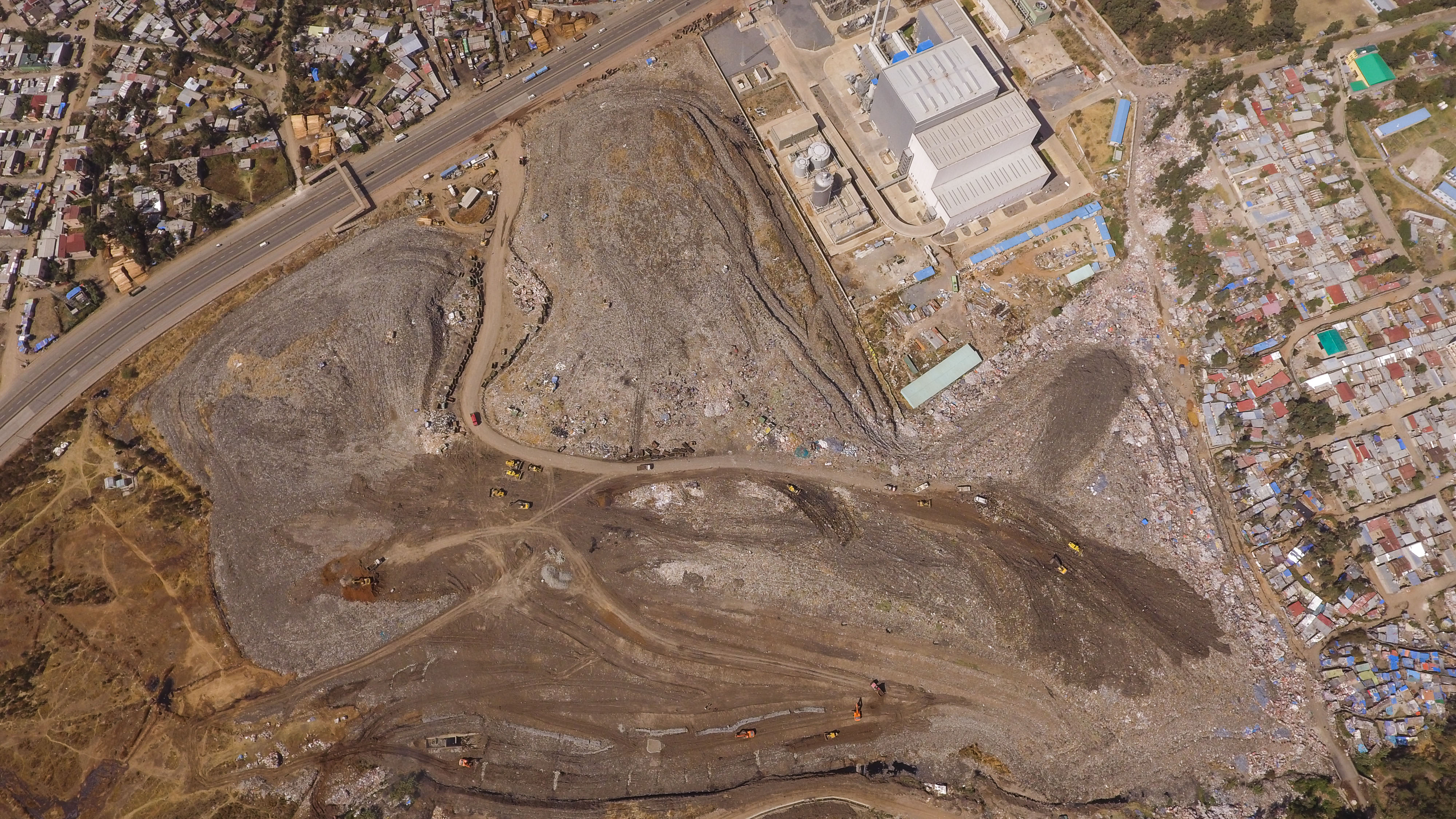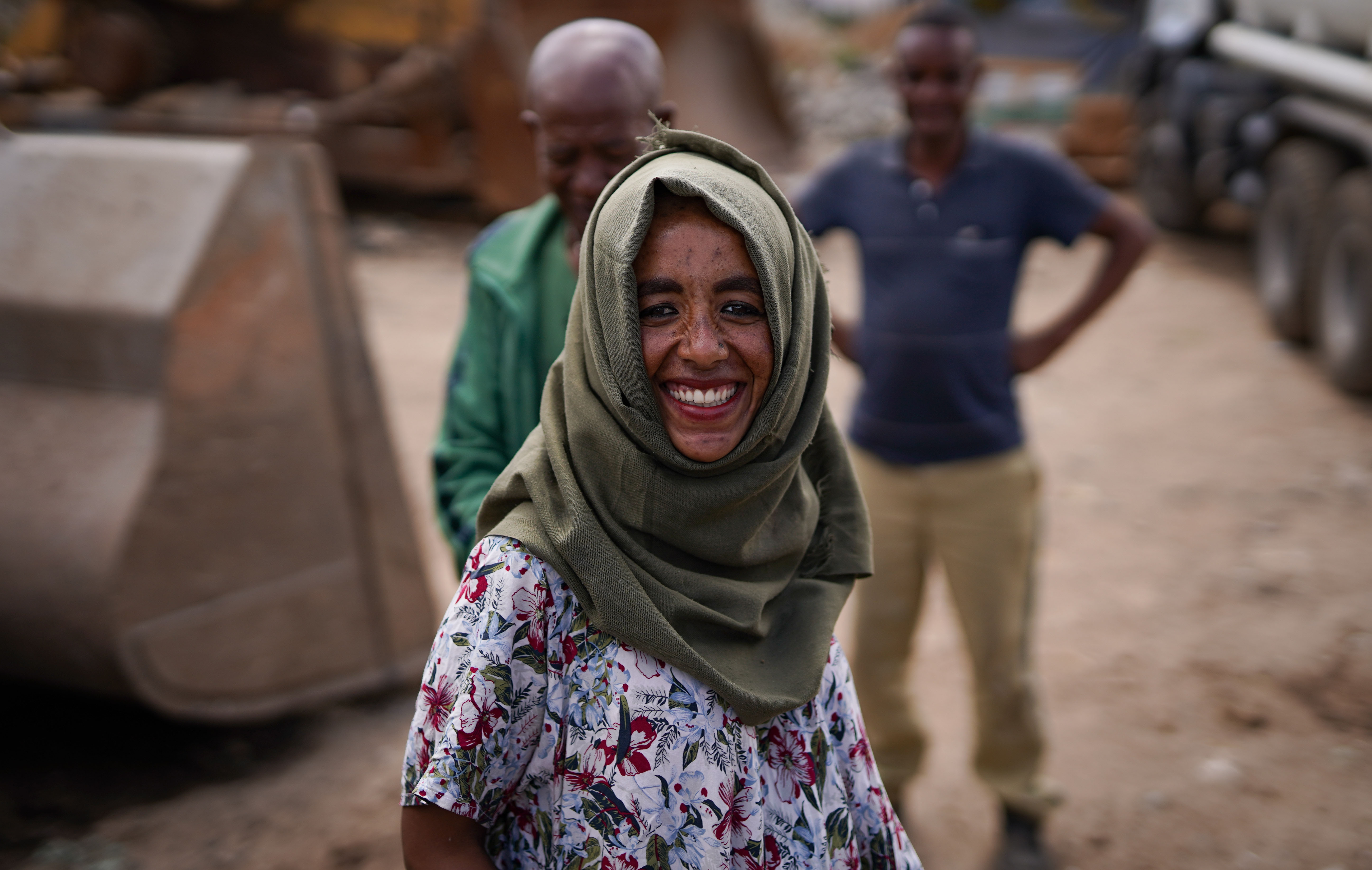Addis Ababa, 5 July 2019 - Bethlehem Belachew walks the newly graded access road to the spot on the Koshe landfill where the dump truck is due to arrive. A hot wind blows plastic bags into the sky. From where she is standing amongst the city’s garbage the bags look like circling birds. But the truck arrives and there is no time to muse. She and her fellow waste pickers move quickly to rake through the bin bags as they tumble from the jaws of the truck. She leans in to her task. It is hot and pungent. But the dump is not nearly as smelly as it used to be. Nor is it as dangerous.
“I have worked here for the past 8 years,” Bethlehem says. “Now the smell has reduced significantly, and there is also no fear of garbage slides because of this project’s work.”
This dump used to experience regular, small landslides, but in March 2017, Koshe had a landslide that killed 116 people.
“The Addis Ababa city Government asked UN-Habitat to support the rehabilitation of this dumpsite, to avoid additional incidents or additional risk to the surrounding community,” explains Aklilu Fikresilassie, a Programme Manager from UN-Habitat. “The city Government also put in financial support and then in-kind support to supplement our process.”
This resulted in the dumpsite rehabilitation project, managed by UN-Habitat with the support of the Government of Japan. Using the ‘Fukuoka Method’ the project repaired the collapsed area of the Koshe dumpsite and prevented further erosion and landslides in the surrounding settlements. The ‘Fukuoka Method’ is a sustainable landfill and solid waste management system developed in Japan by Professor Yasushi Matsufuji of Fukuoka University.
In the past, under typical open dumping, waste was layered on top continuously, creating steep cliffs of garbage. But with heavy rain, and the breakdown of the waste, the high mountains of rubbish tended to collapse suddenly.

“The Fukuoka Method is a very simple technique and it is low cost,” notes Professor Yasushi Matsufuji, Emeritus Professor Fukoka University and the UN-Habitat Fukuoka Advisor. “It is a semi-aerobic landfill concept. Semi-aerobic is changing from anaerobic to aerobic conditions. It is very useful to accelerate decomposition and to reduce methane gas.”
The project works by weaving together a number of low cost ideas such as having compacted roads, to increase water run off and reduce water leaking through the rubbish. Another clever solution is the gas venting pipe system that reduces the heat inside the decomposing waste.
“Due to decomposition, internal heat can reach 40 to 50 degrees celsius,” explains Toshikazu Mito, UN-Habitat International Technical Advisor in Ethiopia and Japan. “Having this vertical pipe creates an updraft, an automatic air movement. By this we can take in more oxygen into the landfill body, and we can increase aerobic decomposition with this oxygen.”
Since the start of the project in 2017, the team have rehabilitated 19 hectares of land.
“We remember very well that two years ago there was the tragic incident,” said H.E. Daisuke Matsunaga, Japanese Ambassador to Ethiopia. “So we want to make sure that nothing of this kind will ever happen again.”
“The change is like that between the sky and earth,” contrasts Biruk Tsegaye, a construction team leader, working at the Koshe landfill dump. “It is much improved, and now it’s in a good condition.”
